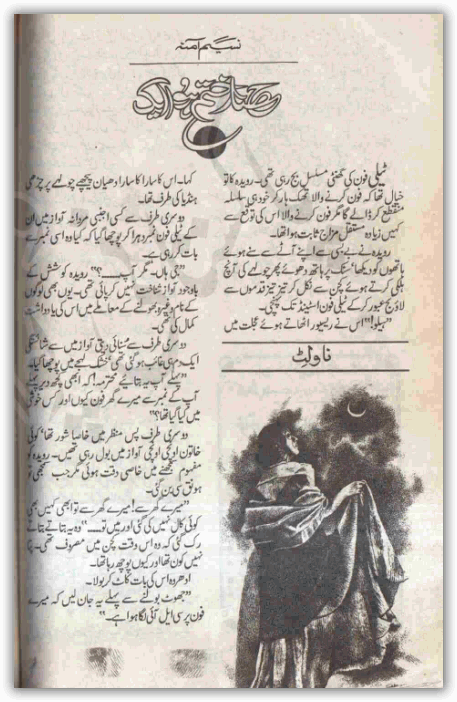PART-I ((MCQs) (COMPULSORY)
Q.1. (i) Selectthe best option/answer and fill in the appropriateCircle on the OMR Answer Sheet. (20x1=20)
(ii) Answers given anywhere, other than OMR Answer Sheet, shall not be considered.
1. Which of these is a direct source of energy for muscle contraction?
(a)ATP (b)Creatine phosphate (c) Lactic acid (d)Glucose (e)None of these
2. Muscle fatigue is caused by:
(a)CO2 (b)Lactic acid (c) Fumaric acid (d)Ethyl alcohol (e) None of these
3. The functional unit in a skeletal muscle is called:
(a)Actin filament (b)Sarcomere (c) Z line (d)Myosin filament (e) None of these
4. We would describe the layered, flat, scaly epithelium of human skin as:
(a)Simple Squamous (b)Stratified Squamous (c) Stratified Columnar
(d)Pseudo Stratified Cubiodal (e) None of these
5. Which of the following is not considered to be a tissue?
(a)Cartilage (b)Mucous membrane lining the stomach (c) Blood (d)Brain (e) All of these
6. As a Zoologist you would look for looping movement in:
(a)Earthworms (b)Poly chaetes (c) Echinoderms (d)Leeches (e) None of these
7. The elements of nervous system which help in co-ordination are:
(a)Receptors (b)Neurons (c) Effectors (d)All of these (e) None of these
8. The distal ends of which of these neurons lie adjacent to blood stream:
(a)Afferent neurons (b)Efferent neurons (c) Inter neurons
(d)Neuro secretory neuron (e) All of these
9. The electrical potential that exists across a cell membrane is:
(a)Resting membrane potential (b)Active membrane potential (c) Automatic potential
(d)All of these (e) None of these
10. A nerve is a:
(a)Collection of neurons (b)Concentration of dendrites and exons
(c) Bundles of exons or dendrites of neurons
(d)Bundles of exons or dendrites bounded by connective tissues (e) None of these
11. Which of these is a correct statement?
(a)All of the neurons are excitable (b)All of the neurons can transmit impulses across their membrane
(c) Transmission of nurve impulses is always unidirectional (d)All of these statements
(e) None of these
12. Sodium-Potassium pump operates with the help of which of these enzymes:
(a)Na
+
―K
+
ATPase (b)Phosphatase (c) Isomerase (d)Hydrolase (e) None of these
13. Name of the chemical messengers released to the exterior of one animal that affect the behaviour of
another individual of the same species:
(a)Neuropeptides (b)Neurohormones (c) Pheromones (d)Neurotransmitters (e) None of these
14. Hormones that the Thyroid gland secrets are:
(a)Proteins (b)Amines (c) Steroids (d)Carbohydrates (e) All of these
15. Thyroxine is:
(a)An enzyme (b)A hormone (c) A vitamin (d)An excretory waste (e) None of these
16. Development of Secondary Sexual characters in a female is controlled by:
(a)STH (b)Androgens (c) TSH (d)Estrogens (e) None of these
17. Insulin is a hormone which is secreted by:
(a)Islet of langerhans and regulates glucose level in blood (b)Thyroid and regulates growth
(c) Adrenals and regulates heart beat (d)Pituitary and regulates reproduction (e) None of these
18. Hormone responsible for regulation of calcium and phosphorous is secreted by:
(a)Thyroid (b)Para-thyroid (c) Adrenals (d)Thymus (e) None of these
19. A hormone responsible for conversion of glucose into glycogen within the liver is called:
(a)Secretin (b)Gastrin (c) Pancreozymin (d)Insulin (e) None of these
20. Fibrinogen is found in the:
(a)Bile and produced in liver (b)Blood and produced by RBCS
(c) Blood and produced in liver (d)Bone and produced in bone marrow (e) None of these
PART-II
NOTE: (i) Part-II is to be attempted on the separate Answer Book.
(ii)Candidate must write Q. No.in the Answer Bookin accordance with Q. No.in the Q. Paper.
(iii)Attempt ONLY FOUR questions from PART-II, selecting TWOquestions from EACH
SECTION. ALL questions carry EQUAL marks.
(iv) Extra attempt of any question or any part of the attempted question will not be considered.
SECTION-A
*************
Q.2. Describe the phenomenon of Mitotic Cell division inanimals. (20)
Q.3. Define an allele. Explain Mendel’s principle of Independent assortment with examples. (20)
Q.4. What do you know about sex-linked inheritance? Explain with examples. (20)
SECTION-B
Q.5. Do you believe in “Evolution”. Give evidences in favour of the theory. (20)
Q.6. Define bio-geochemical cycles. Explain ‘Nitrogen’ cycle diagrammatically. (20)
Q.7. What is Darwinism? Differentiate it from Lamarkism.What do you know about the
synthesis of Darwinian theory with population genetics?
(20)
Q.8. Describe various interactions among animal populations (20)
Q.1. (i) Selectthe best option/answer and fill in the appropriateCircle on the OMR Answer Sheet. (20x1=20)
(ii) Answers given anywhere, other than OMR Answer Sheet, shall not be considered.
1. Which of these is a direct source of energy for muscle contraction?
(a)ATP (b)Creatine phosphate (c) Lactic acid (d)Glucose (e)None of these
2. Muscle fatigue is caused by:
(a)CO2 (b)Lactic acid (c) Fumaric acid (d)Ethyl alcohol (e) None of these
3. The functional unit in a skeletal muscle is called:
(a)Actin filament (b)Sarcomere (c) Z line (d)Myosin filament (e) None of these
4. We would describe the layered, flat, scaly epithelium of human skin as:
(a)Simple Squamous (b)Stratified Squamous (c) Stratified Columnar
(d)Pseudo Stratified Cubiodal (e) None of these
5. Which of the following is not considered to be a tissue?
(a)Cartilage (b)Mucous membrane lining the stomach (c) Blood (d)Brain (e) All of these
6. As a Zoologist you would look for looping movement in:
(a)Earthworms (b)Poly chaetes (c) Echinoderms (d)Leeches (e) None of these
7. The elements of nervous system which help in co-ordination are:
(a)Receptors (b)Neurons (c) Effectors (d)All of these (e) None of these
8. The distal ends of which of these neurons lie adjacent to blood stream:
(a)Afferent neurons (b)Efferent neurons (c) Inter neurons
(d)Neuro secretory neuron (e) All of these
9. The electrical potential that exists across a cell membrane is:
(a)Resting membrane potential (b)Active membrane potential (c) Automatic potential
(d)All of these (e) None of these
10. A nerve is a:
(a)Collection of neurons (b)Concentration of dendrites and exons
(c) Bundles of exons or dendrites of neurons
(d)Bundles of exons or dendrites bounded by connective tissues (e) None of these
11. Which of these is a correct statement?
(a)All of the neurons are excitable (b)All of the neurons can transmit impulses across their membrane
(c) Transmission of nurve impulses is always unidirectional (d)All of these statements
(e) None of these
12. Sodium-Potassium pump operates with the help of which of these enzymes:
(a)Na
+
―K
+
ATPase (b)Phosphatase (c) Isomerase (d)Hydrolase (e) None of these
13. Name of the chemical messengers released to the exterior of one animal that affect the behaviour of
another individual of the same species:
(a)Neuropeptides (b)Neurohormones (c) Pheromones (d)Neurotransmitters (e) None of these
14. Hormones that the Thyroid gland secrets are:
(a)Proteins (b)Amines (c) Steroids (d)Carbohydrates (e) All of these
15. Thyroxine is:
(a)An enzyme (b)A hormone (c) A vitamin (d)An excretory waste (e) None of these
16. Development of Secondary Sexual characters in a female is controlled by:
(a)STH (b)Androgens (c) TSH (d)Estrogens (e) None of these
17. Insulin is a hormone which is secreted by:
(a)Islet of langerhans and regulates glucose level in blood (b)Thyroid and regulates growth
(c) Adrenals and regulates heart beat (d)Pituitary and regulates reproduction (e) None of these
18. Hormone responsible for regulation of calcium and phosphorous is secreted by:
(a)Thyroid (b)Para-thyroid (c) Adrenals (d)Thymus (e) None of these
19. A hormone responsible for conversion of glucose into glycogen within the liver is called:
(a)Secretin (b)Gastrin (c) Pancreozymin (d)Insulin (e) None of these
20. Fibrinogen is found in the:
(a)Bile and produced in liver (b)Blood and produced by RBCS
(c) Blood and produced in liver (d)Bone and produced in bone marrow (e) None of these
PART-II
NOTE: (i) Part-II is to be attempted on the separate Answer Book.
(ii)Candidate must write Q. No.in the Answer Bookin accordance with Q. No.in the Q. Paper.
(iii)Attempt ONLY FOUR questions from PART-II, selecting TWOquestions from EACH
SECTION. ALL questions carry EQUAL marks.
(iv) Extra attempt of any question or any part of the attempted question will not be considered.
SECTION-A
*************
Q.2. Describe the phenomenon of Mitotic Cell division inanimals. (20)
Q.3. Define an allele. Explain Mendel’s principle of Independent assortment with examples. (20)
Q.4. What do you know about sex-linked inheritance? Explain with examples. (20)
SECTION-B
Q.5. Do you believe in “Evolution”. Give evidences in favour of the theory. (20)
Q.6. Define bio-geochemical cycles. Explain ‘Nitrogen’ cycle diagrammatically. (20)
Q.7. What is Darwinism? Differentiate it from Lamarkism.What do you know about the
synthesis of Darwinian theory with population genetics?
(20)
Q.8. Describe various interactions among animal populations (20)






